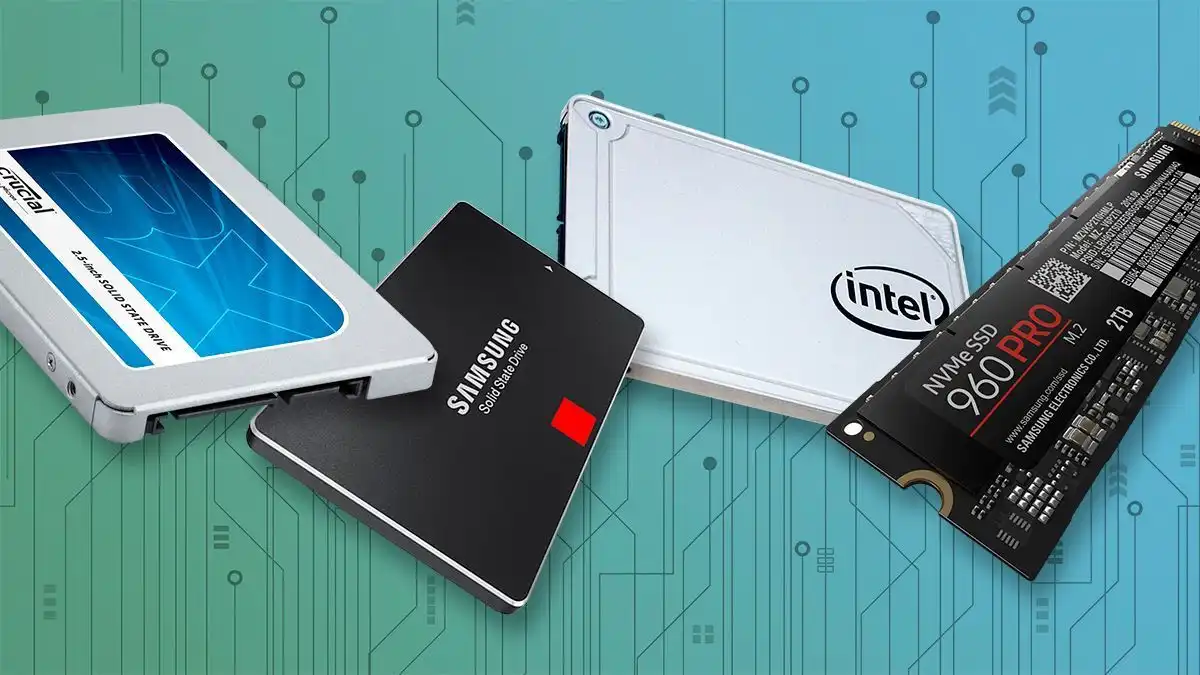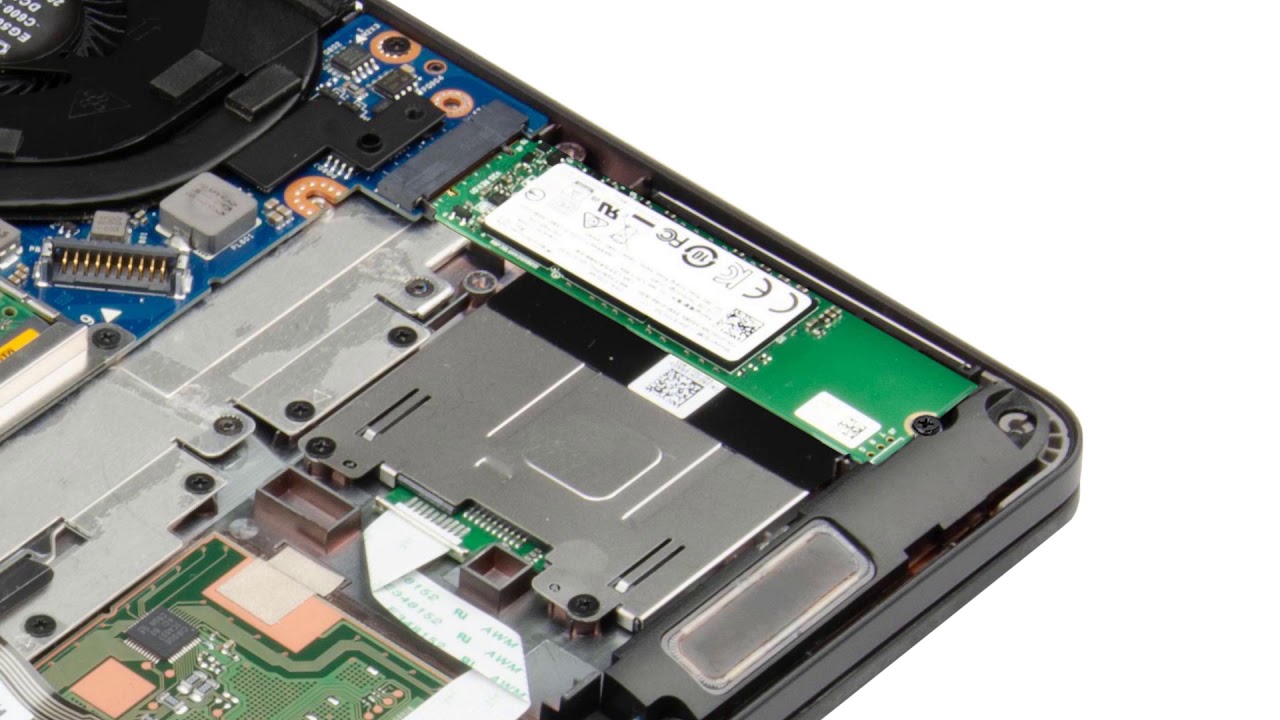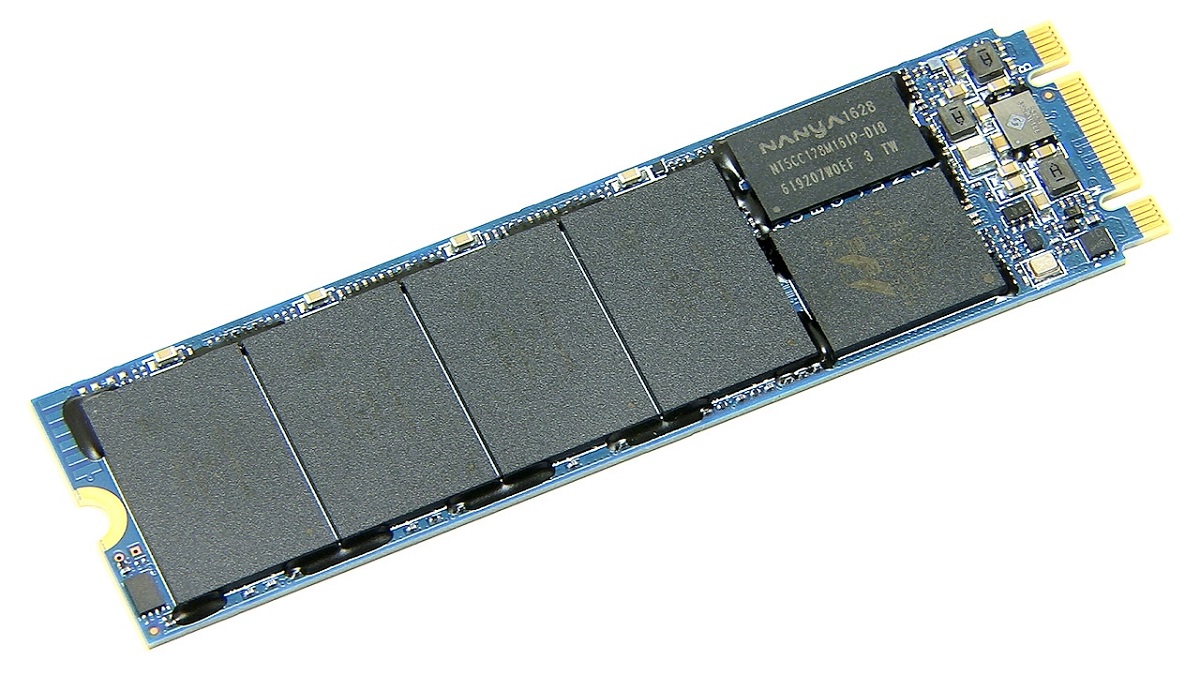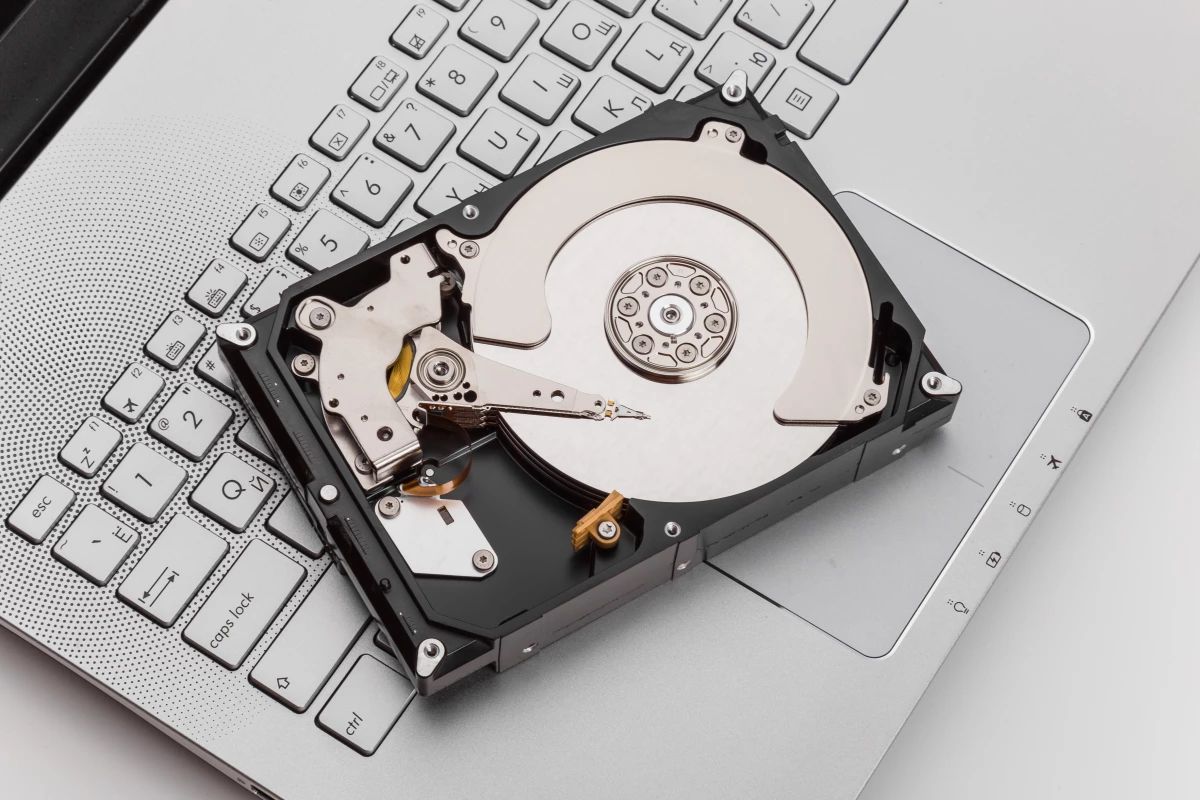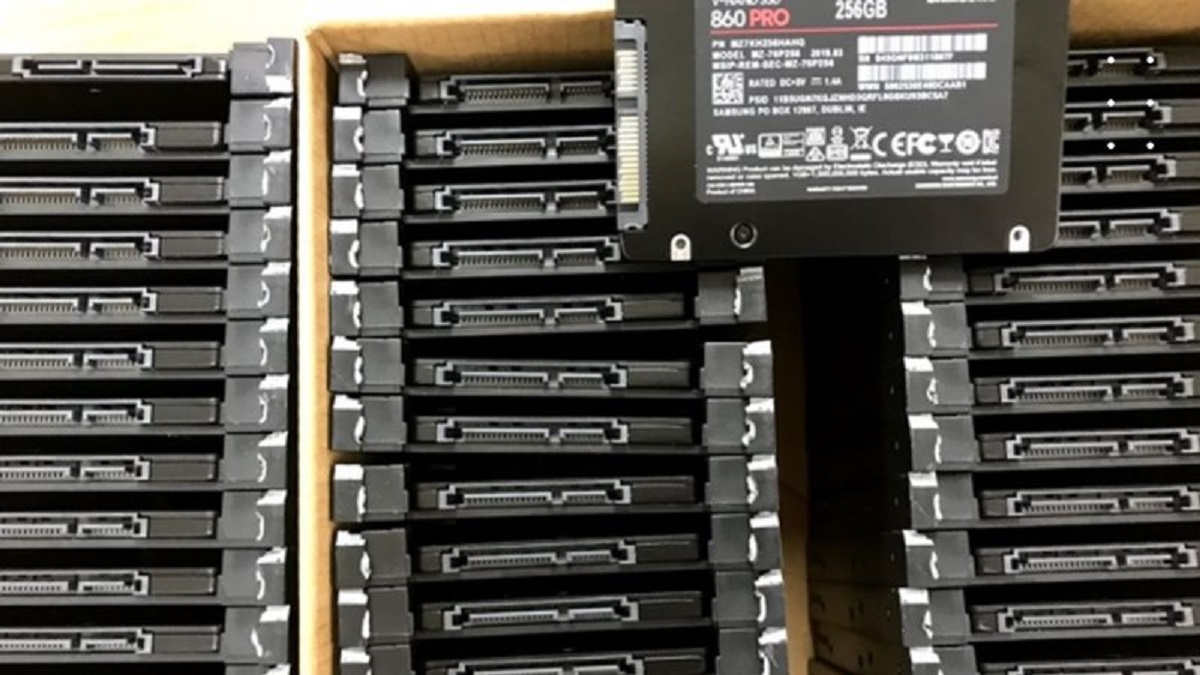Introduction
Welcome to the world of solid-state drives (SSDs), where speed, performance, and storage capacity are essential. As technology continues to advance, so too does the demand for faster data transfer rates and larger storage capacities. One particular type of SSD that has gained significant popularity in recent years is the M.2 SSD.
In this article, we will explore the world of M.2 SSDs, diving into their features, benefits, and the largest capacity options available on the market. Whether you’re a tech enthusiast or simply in need of reliable and high-performing storage, understanding M.2 SSDs can help you make an informed decision when it comes to upgrading your storage solution.
So, what exactly is an M.2 SSD? How does it differ from traditional SSDs? And why should you consider investing in one? We’ll answer all these questions and more as we delve into the world of M.2 SSDs and explore the largest capacity options currently available.
But before we get into the nitty-gritty details, let’s start by understanding the basics of M.2 SSDs and their form factor.
What is M.2 SSD?
M.2 SSD, also known as Next Generation Form Factor (NGFF), is a solid-state storage device that has gained popularity for its compact size, high performance, and versatility. It is an evolution of the traditional 2.5-inch SATA SSD, offering faster data transfer rates and supporting different interface protocols.
One of the main advantages of M.2 SSDs is their small form factor. Unlike traditional SSDs, which require mounting brackets in desktops or laptops, M.2 SSDs are designed to be inserted directly into the motherboard using the M.2 slot. This not only saves space but also allows for more flexible placement options.
M.2 SSDs come in different lengths and widths, depending on the keying and the number of PCIe lanes they support. The keying determines the connector type and interface compatibility. The most common key types are B, M, and B+M, each with different connector configurations.
When it comes to interface compatibility, M.2 SSDs support various protocols, including SATA, PCIe, and NVMe. SATA-based M.2 SSDs offer similar performance to traditional SATA SSDs but with a smaller form factor. On the other hand, PCIe and NVMe-based M.2 SSDs take advantage of the PCIe interface for significantly faster data transfer rates.
It’s worth noting that not all M.2 slots support all interface protocols. Some motherboards only have M.2 slots that support SATA, while others have slots that support PCIe and NVMe. It’s essential to check your motherboard’s specifications or consult the manufacturer’s documentation to ensure compatibility before purchasing an M.2 SSD.
Overall, M.2 SSDs offer a compact and versatile storage solution with improved performance over traditional SSDs. They excel in applications that require fast data transfer rates, such as gaming, video editing, and other demanding tasks. Now that we understand the basics of M.2 SSDs, let’s explore their form factor in more detail.
Understanding M.2 Form Factor
The M.2 form factor refers to the physical size and connector design of M.2 SSDs. It is characterized by its thin, flat, and compact design, making it ideal for use in small devices such as ultrabooks, tablets, and compact desktops.
M.2 SSDs come in different sizes, indicated by their length and width measurements. The most common lengths are 22mm, 30mm, 42mm, 60mm, 80mm, and 110mm, while the width can be either 16mm or 22mm. These dimensions determine the capacity and compatibility of the M.2 SSD.
An important aspect of the M.2 form factor is the connector keying, which determines the physical and electrical compatibility of the M.2 SSD with the motherboard. There are three types of keys: B key, M key, and B+M key. Each key type has a different number of pins and connector configurations.
The B key supports SATA and PCIe ×2 interface, while the M key supports PCIe ×4 and NVMe interface. The B+M key supports both B key and M key configurations, allowing for compatibility with various interfaces.
It’s essential to ensure that the connector keying of the M.2 SSD matches the motherboard’s M.2 slot to ensure proper installation and compatibility. Some motherboards have multiple M.2 slots, each with different keying and interface support, so it’s crucial to check the specifications of your motherboard and the M.2 SSD before making a purchase.
Another consideration is the supported PCIe lanes. The more PCIe lanes an M.2 SSD supports, the faster the data transfer rates it can achieve. M.2 SSDs can support different numbers of PCIe lanes, typically ranging from 1 to 4. Higher PCIe lane numbers result in faster speeds, particularly when using NVMe protocol.
The M.2 form factor’s flexibility and various keying and interface options make it a versatile storage solution for different applications and devices. Whether you need high-speed storage for gaming, multimedia production, or general computing, there is likely an M.2 SSD that suits your needs.
Now that we have a solid understanding of the M.2 form factor, let’s move on to the factors to consider when choosing an M.2 SSD.
Factors to Consider When Choosing an M.2 SSD
When choosing an M.2 SSD, there are several factors to consider to ensure that you select the right one for your needs. These factors include capacity, performance, interface, compatibility, and cost.
1. Capacity: The capacity of the M.2 SSD determines how much data you can store on it. M.2 SSDs come in a range of capacities, from 128GB to several terabytes. Consider your storage needs and choose a capacity that provides sufficient space for your operating system, applications, and files.
2. Performance: Performance is a critical factor to consider, especially if you require fast data transfer rates. Look for M.2 SSDs that offer high read and write speeds to ensure quick response times and smooth data access.
3. Interface: The interface of the M.2 SSD determines its compatibility and data transfer speed. SATA-based M.2 SSDs offer decent performance but are limited by the SATA interface’s speed. If you require faster speeds, consider PCIe and NVMe-based M.2 SSDs, which take advantage of the PCIe interface for significantly higher data transfer rates.
4. Compatibility: It’s crucial to ensure that the M.2 SSD you choose is compatible with your motherboard’s M.2 slot. Check the keying and interface compatibility to ensure a proper connection and optimal performance. Additionally, confirm that your system’s BIOS supports booting from an M.2 SSD if you plan to use it as a boot drive.
5. Cost: Cost is also an important consideration when selecting an M.2 SSD. While larger capacities and higher performance generally come with a higher price tag, it’s essential to find a balance between your budget and the features you require. Consider your storage needs and budget to make an informed decision.
6. Reliability: Finally, take into account the reliability and warranty of the M.2 SSD. Look for reputable brands known for their reliable SSDs and check customer reviews for feedback on durability and performance. Additionally, ensure the SSD comes with a sufficient warranty period to protect your investment.
By considering these factors, you can narrow down your options and choose an M.2 SSD that meets your requirements in terms of capacity, performance, compatibility, and cost. Now, let’s explore the advantages of using M.2 SSDs over traditional storage options.
The Advantages of Using M.2 SSDs
M.2 SSDs offer several advantages over traditional storage options, making them a popular choice for both personal and professional use. Let’s explore some of the key benefits of using M.2 SSDs.
- Compact Size: One of the primary advantages of M.2 SSDs is their compact size. Their small dimensions allow for easy installation in space-constrained devices, such as ultrabooks and mini PCs, without the need for mounting brackets or additional cables.
- Fast Data Transfer Speeds: M.2 SSDs leverage the PCIe interface, enabling them to deliver significantly faster data transfer rates compared to traditional SATA-based storage options. This results in quicker system boot times, faster application load times, and improved overall system responsiveness.
- NVMe Support: Many M.2 SSDs support the NVMe (Non-Volatile Memory Express) protocol, which allows for even faster data transfer speeds and reduced latency. NVMe-based M.2 SSDs take full advantage of the PCIe interface and deliver exceptional performance for demanding tasks like gaming, multimedia editing, and content creation.
- Lower Power Consumption: M.2 SSDs are designed to be energy-efficient and consume less power compared to traditional hard disk drives (HDDs) and SATA-based SSDs. This not only helps to improve battery life in laptops and mobile devices but also reduces heat generation, leading to cooler and more reliable operation.
- No Moving Parts: M.2 SSDs are solid-state storage devices, meaning they have no moving mechanical parts like hard drives. This makes them more durable and resistant to shocks, vibrations, and physical damage. Additionally, their lack of moving parts results in near-silent operation and improved system reliability.
- Enhanced Gaming Experience: M.2 SSDs are widely used by gamers due to their high-performance capabilities. With faster data transfer speeds, games load faster, reducing lag and improving the overall gaming experience. The quick access to game data also helps to minimize loading times and allows for smoother gameplay.
These advantages make M.2 SSDs an attractive option for various applications, including gaming, multimedia production, system upgrades, and portable devices. As M.2 SSD technology continues to evolve, we can expect further enhancements in performance, capacity, and affordability.
Now, let’s take a look at some of the largest capacity M.2 SSDs currently available on the market.
The Largest Capacity M.2 SSDs Currently Available
As technology advances, M.2 SSDs are becoming increasingly capable of storing larger amounts of data. This is good news for users who require high-capacity storage for their applications, multimedia content, and large datasets. Let’s explore some of the largest capacity M.2 SSDs currently available on the market.
- Samsung 980 PRO: The Samsung 980 PRO is a high-performance M.2 SSD that offers capacities up to a staggering 2TB. It utilizes PCIe 4.0 technology and supports the NVMe protocol, providing lightning-fast performance for demanding workloads.
- Western Digital Black SN850: The Western Digital Black SN850 is another top-tier M.2 SSD that delivers impressive capacities, reaching up to 2TB. It boasts PCIe 4.0 support and NVMe technology, ensuring exceptional speed and responsiveness for intensive tasks and gaming.
- Seagate FireCuda 530: The Seagate FireCuda 530 series offers large capacities, including 2TB, making it ideal for users requiring ample space for their storage-intensive applications and content. It combines PCIe 4.0 interface and NVMe technology to deliver remarkable performance and reliability.
- Crucial P5 Plus: The Crucial P5 Plus series showcases capacities up to 2TB, catering to the needs of users who demand generous storage space. With its PCIe 4.0 support and NVMe protocol, it delivers impressive speed and enhanced storage performance.
- Adata XPG GAMMIX S70: The Adata XPG GAMMIX S70 range is available in capacities up to 2TB, making it an excellent choice for those requiring extensive storage capabilities. It takes advantage of PCIe 4.0 and NVMe to offer high-speed data transfer rates and efficient operation.
These are just a few examples of the largest capacity M.2 SSDs currently available on the market. It’s important to note that these capacities may vary depending on the specific models and configurations offered by manufacturers.
When considering a high-capacity M.2 SSD, it’s essential to ensure compatibility with your system’s motherboard and verify that your system’s BIOS supports the selected M.2 SSD. Additionally, check the performance specifications and reviews to ensure the chosen drive meets your specific needs.
With the availability of such large capacity M.2 SSDs, users can now enjoy a vast amount of storage space without sacrificing speed or performance. Whether you’re a creative professional, a data analyst, or a dedicated gamer, these high-capacity M.2 SSDs can provide the storage solution you need.
Now that we’ve explored the advantages and largest capacity options of M.2 SSDs, it’s clear that these compact yet powerful storage devices are revolutionizing the way we store and access data. With their high-performance capabilities, sleek form factor, and ever-increasing capacities, M.2 SSDs are an excellent choice for anyone seeking fast, reliable, and spacious storage for their computing needs.
Conclusion
M.2 SSDs have undoubtedly emerged as a game-changer in the world of storage solutions. With their compact size, blazing-fast performance, and ever-expanding capacities, they have become the go-to choice for users looking to upgrade their storage systems.
In this article, we explored the basics of M.2 SSDs, understanding their form factor and the various keying and interface options available. We also discussed the factors to consider when choosing an M.2 SSD, such as capacity, performance, interface, compatibility, and cost.
Furthermore, we highlighted the advantages of using M.2 SSDs, including their compact size, fast data transfer speeds, NVMe support, lower power consumption, durability, and enhanced gaming experience. M.2 SSDs offer a host of benefits that make them a superior choice compared to traditional storage options.
Lastly, we examined some of the largest capacity M.2 SSDs currently available on the market, showcasing their impressive storage capabilities. With capacities up to 2TB, these drives provide ample space for storing extensive amounts of data and running storage-intensive applications.
As technology continues to advance, M.2 SSDs are expected to become even more powerful and offer even larger capacities. It’s an exciting time for storage enthusiasts and professionals who demand high-performance and high-capacity storage solutions.
Whether you’re a gamer needing lightning-fast loading times, a creative professional handling large multimedia files, or a data analyst working with massive datasets, M.2 SSDs provide the speed, capacity, and reliability you need to elevate your computing experience.
So, if you’re considering upgrading your storage solution, don’t overlook the benefits of M.2 SSDs. Explore the available options, consider your needs and budget, and invest in an M.2 SSD that will transform your computing experience by delivering lightning-fast performance and ample storage space.
Remember, the world of storage technology is constantly evolving, and M.2 SSDs are at the forefront of this revolution. Embrace the future of storage and experience the power and convenience that M.2 SSDs offer.







